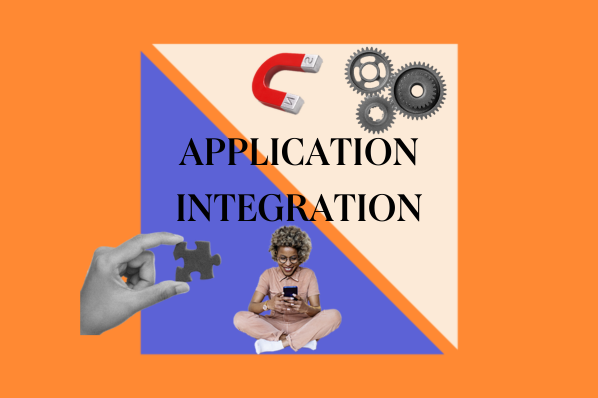But with so many different types of integration software and applications available, it can be difficult to know where to start. Fortunately, the key to mastering application integration is to understand the basics and apply them in a personalized way.
This blog will cover the essentials of application integration and provide actionable steps for professionals seeking to excel in this domain.
What is Application Integration?
Application integration connects and combines different software applications to create workflows that streamline processes. By integrating two or more applications, businesses can automate mundane tasks that would otherwise require manual entry and management. The primary mechanism for achieving this is through Application Programming Interfaces (APIs), which are rules and protocols allowing different applications to communicate and share information. This helps them save time and money while ensuring accuracy in data processing.
Exploring Application Integration Software
Application integration software is a platform or tool that helps connect various applications, allowing them to communicate and collaborate by sharing data. This type of software typically helps streamline data exchange and automate mundane tasks while providing security safeguards such as encryption technology to protect sensitive information.
Popular application integration solutions include:
- Cloud-based integrations - such as Amazon Web Services and Microsoft Azure- provide a platform for connecting applications in the cloud.
- Enterprise service bus (ESB) - such as MuleSoft, TIBCO, and IBM Websphere- provide an enterprise-level solution for connectivity between applications.
- Integration Platforms-as-a-Service (iPaaS) - such as Microsoft Power Automate, Boomi, and Zapier- provides an end-to-end solution for integrating applications.
When choosing an integration solution, consider factors such as ease of use, scalability, security, and the level of customization it offers. Additionally, consider the cost and the support provided by the vendor.
Crafting an Effective Application Integration Strategy
A well-planned integration strategy is key to achieving seamless application integration. Here are the steps to develop a successful integration strategy:
- Assess the current IT landscape: Analyze your existing systems and applications to identify potential integration points.
- Define integration goals and objectives: Determine what you want to achieve through integration, such as streamlining processes or improving data accuracy.
- Identify and prioritize applications to be integrated: Select the most critical applications that will benefit from integration and prioritize them.
- Select the right integration software: Choose software that meets your business needs and aligns with your integration goals.
- Implement, monitor, and continuously improve the integration process: Execute the integration plan, monitor its progress, and make improvements as needed.
Benefits of Application Integration
- Improved problem-solving and critical thinking skills: Integrating applications challenges you to think critically and solve complex problems, enhancing your overall skill set.
- Enhanced collaboration and communication abilities: As you work on integrating various applications, you'll need to communicate effectively with team members and stakeholders, improving your collaboration skills.
- Greater adaptability and flexibility in the workplace: Mastering application integration equips you with the ability to adapt to new technologies and rapidly changing business environments.
- Increased marketability and career growth opportunities: Professionals with application integration skills are in high demand, making you more marketable and opening up new career opportunities.
- Streamlined work processes leading to increased productivity: Efficient processes and reduced errors ultimately lead to increased productivity and success in your professional life.
7 Actionable Steps to Master Application Integration
- Educate yourself on the fundamentals of application integration and APIs: Start by researching and learning the basics of application integration and how APIs work.
- Gain hands-on experience with integration tools and platforms: Experiment with popular integration platforms like MuleSoft, Dell Boomi, and Zapier to gain practical experience.
- Network with other professionals in the field: Attend industry events, join online forums, and connect with other professionals to learn from their experiences and expand your network.
- Participate in industry-related workshops and events: Attend workshops, conferences, and webinars to stay up-to-date with the latest trends and best practices in application integration.
- Stay current with the latest trends and best practices: Follow industry blogs and news sources to keep up with the latest developments in application integration and related technologies.
- Apply your skills to real-world projects: Look for opportunities to apply your newly acquired skills to real-world projects, either at work or through freelance gigs. This hands-on experience will help solidify your understanding of application integration.
- Continuously seek feedback and opportunities for improvement: Ask for feedback from colleagues, mentors, or industry experts, and use their insights further to hone your skills and knowledge in application integration.
Application Integration Final Thoughts
Mastering application integration is an invaluable skill for professionals seeking to thrive in the digital era. By following the actionable steps outlined in this blog, you can enhance your professional skills, open up new career opportunities, and contribute to the success of your organization. Begin your journey towards becoming an application integration expert and reap the rewards of a fulfilling and successful career.
Integrations












